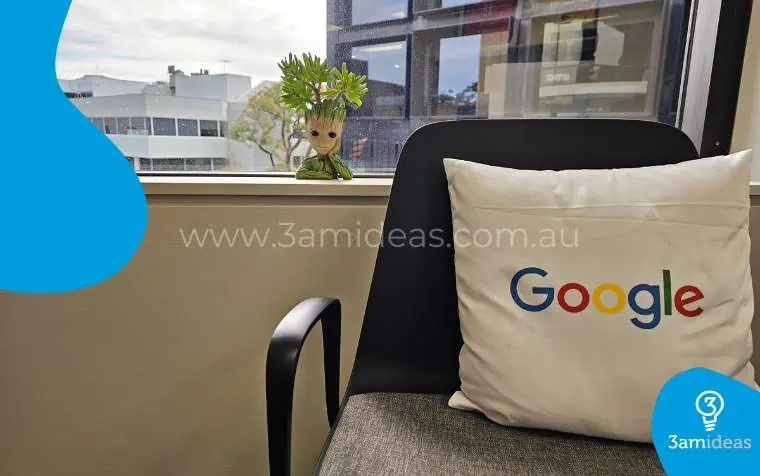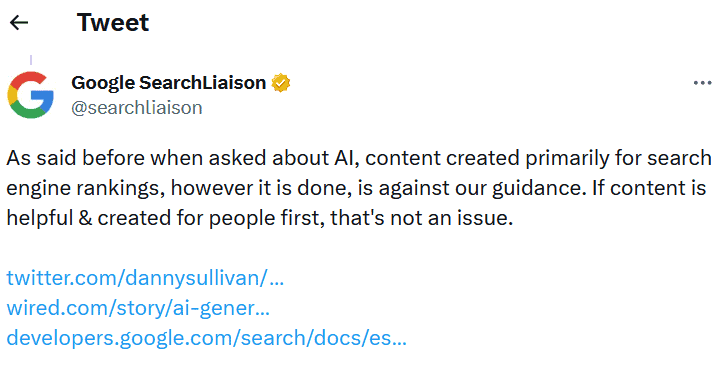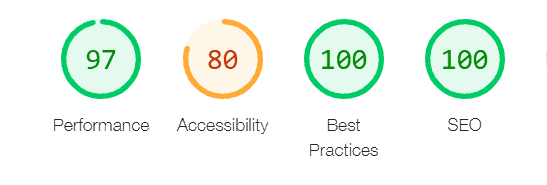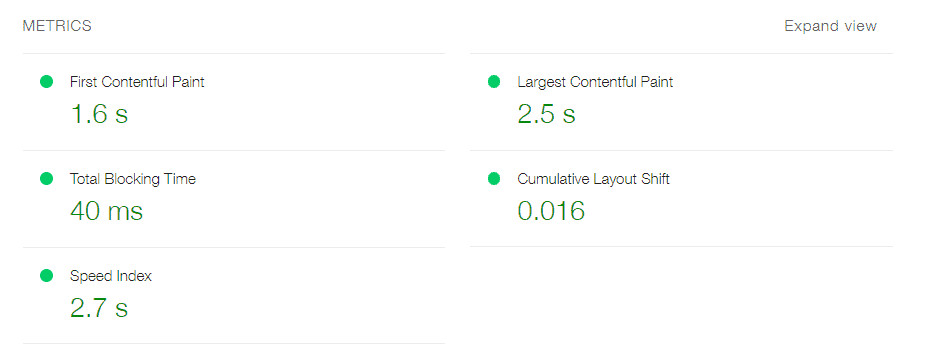This is Why Your Website Doesn’t Generate Traffic
How To Get More Website Traffic Easily
I remember a time many moons ago where you could build a website on some shady website builder, such as GeoCities (if you recognise this name you’re old), and within days you could watch your 90’s inspired visitor counter going up with the traffic your site was generating.
Some 10 years later things had changed dramatically but you could basically still get traffic very easily by creating unoptimised blog posts.
These days things are much harder not only from an SEO and algorithm perspective, but also the overwhelming choices that business owners have when it comes to having a website built.
Unfortunately, web designers aren’t necessarily giving people the right advice, they’re just giving them the information they either want to hear, or what they are personally equipped to deliver.
So we see bad websites, a lot of them. We see a lot of money getting invested in sites that never generate any traffic whatsoever. Are business owners getting their return on investment from a website that never generates its own traffic?
Let’s explore the Top 3 Reasons Why Your Website Doesn’t Generate Traffic.
Your Content Is Not Valuable
Google, as a search engine, has one job. That job is to connect you, the searcher, with the best possible information to answer your search query. Google doesn’t want to fail at doing this job because it will lose users if it does. Have you used another search engine like Yahoo recently? The search experience is terrible and the results you get back are worse.
Users don’t want to have to go digging for information half way down the search engine results page, let alone on Page 2. Nobody goes on page 2 unless they’re desperate. Once you start generating natural backlinks to your website, you’ll know you’re on the right path for creating valuable content.
What does this mean for you? It means that Google has deemed that whatever content you do have on your website isn’t valuable enough in comparison to the other available results.
When it comes to writing content for your website, think blog posts, you’ll want to be writing for humans first as stated many times by the search engine themselves, as can be seen in the Tweet below.
Writing Content for Humans
Writing content for humans means your language should be natural while providing valuable information in direct answer to your users’ needs. Don’t try to fool the search engine by stuffing keywords into your article. As long as you’re mentioning your key search phrases in a natural tone, you’ll find you’ll most likely pick up traffic over time.
Can it be sped up by doing SEO on it? Most likely, but only if you know what you’re doing.
Is there something you could be doing to implement some DIY SEO? You can actually.
Writing Clear & Structured Content
Consider your blog post titles with some seriousness.
Are they clear in what you’re offering, or are you trying to be creative with them that don’t really tell anybody, humans and Google alike, what your post is about.
Don’t try to be a tabloid newspaper baiting people in with misleading, or outright confusing, creative titles. Search engines won’t understand it, and users, presented with a million other choices than yours, won’t engage with something if they’re not very confident they’re going to find what they’re looking for.
Your post titles should clearly communicate what your content is about, and which question you’ll be answering and include your keyword or key search phrase in the title.
Once you’ve got a good title, you’ll want to use your basic word processing structure or hierarchy that you’re used to from Word etc. Your Heading 1 is your post title, of which there should only be one.
Support this Heading 1 with Heading 2 subheadings. These could include keywords but should clearly break up your content in a way that is structured and sensible. This makes it easier for readers to find what they’re looking for, states to Google what information you’re presenting (Heading 1) and what evidence you’re providing to support your opinion (Heading 2).
Do this and you’ll have an easier time being found through the algorithm, while also drawing the attention of human readers.
The longer readers hang around your content, the more Google will think it is of value.
Your Website Is Built Wrong
There are number of factors that can impact your website’s performance which ultimately leads to the search engine not sending traffic your way. Let’s explore some of these and what you can do to improve your website build by making, potentially, small changes.
One Page Websites
If you have a website that is just a one-page site, you have no hope of attracting any organic web traffic at all.
One-page websites are, at best, online business cards that will only be found if you direct somebody to it. In Google’s eyes, you’re not an expert in your field, you’re not authoritative and therefore not trustworthy.
If your competitor has multiple pages, talking in-depth about your industry, product, or service, they’re positioning themselves to be an expert in your field and, as we’ve said, Google is looking for the best possible answer to a user’s question.
Your one-page website is exceptionally unlikely to be that resource.
You Don’t Have Service Pages
It’s a common misconception that when people first enter your website they come in through your homepage. While users who are directly searching for your business will most likely end up there, customers are actually more likely to come in through one of your service pages, if your site has been set up properly.
People typically know what they’re searching for. When it comes to us, sure they might be looking for “digital marketing agency Perth”, but they’re just as likely to put in a plethora of keywords such as “social media marketing”, “website design”, “small business marketing” and more.
As you’ll notice from our site, we have a standalone page for each one of these queries.
That’s because Google rewards specificity.
If you have users searching for “social media marketing” then the search engine will most likely send them to our page titled just that, as opposed to our homepage. That’s because it is a more accurate result that’s inline with search intent. They’re looking for social media, no sense sending them to our homepage to confuse them with all of the other packages we offer.
It’s just as important here that you title these pages clearly and inline with user searches. Just because you have a fantastic service bundle that you’ve labelled the “Win All The Business 3000 Package” doesn’t mean people are searching for it.
If they’re not searching for it, then you’re not going to be found.
You’re Built on The Wrong Platform
As we’ve said already, business owners these days have an overwhelming amount of choice when it comes to website builders, but in reality there are only a few they should be choosing.
Site builders like Wix, Weebly, GoDaddy builder and more will, sooner or later, bottleneck your efforts and limit you in what you can achieve.
Some of these builders are notorious for being slow and clunky, and Google considers page load speed to be an important factor.
Only recently, we saw the introduction of Google’s Core Web Vitals as an important ranking factor, which is predominantly made up of signals around how quickly your website loads.
A website built on one of these platforms will not be able to perform as quickly as say a WordPress website, or a custom coded one.
Business owners should consider what’s going to be working best for them, their technical abilities, and if the platform matches their desired goals.
Even more concerning is the limitation placed on data and user tracking when using some of these builders.
GoDaddy builder, for example, does not currently support the integration of Google Tag Manager, which is a core tool in measuring user and conversion data.
At the end of the day, if you have a website and you want to get leads, you need to be able to measure what gets you leads, where users have originated from, and what journey they undertake while being exposed to your site or brand.
We often say to our clients, when it comes to digital marketing your investment in a website, or advertising, or SEO, isn’t so much about the results you’re generating, it’s about the data you’re collecting and the value that has.
The data you collect, gives you unique insights into your customers and their behaviour, which, if studied correctly, should influence your marketing strategy and messaging going forward.
We have a client, for example, who has a blog post driving about 500 users per month to their site. The blog post is about cleaning up spilled milk from a carpet. We know for a fact that those 500 users per month aren’t dealing with spilled red wine.
We subsequently use retargeting adverts (the kind of ads that follow you around the internet) to promote our client’s carpet cleaning services, and when we do that we use a picture of a glass of spilled milk. Their behaviour, and what they engage with is telling us exactly what problem your site users are trying to solve.
Which Website Platform Should You Be On? It’s WordPress, most likely!
Unless you’re an eCommerce brand, if you’re coming to 3am Ideas, we’ll build you a website on WordPress. This is because it gives you the flexibility and control over data measurement, it’s fast to load if built right, while still being easy enough for clients to make in-house updates to the site.
We find this is a perfect combination that just works. Would a custom coded website perform better? Arguably yes, however you’ll be paying a good chunk of money every single time you want your web developer to update a small part of your website.
That’s great for big companies who have the resources for that, but our small business clients would prefer to do some of that work themselves. We prefer it too. We’d much rather spend your marketing budget on something exciting like creating content for you, doing some SEO or even running ads, over charging you to update your opening hours on the site.
If you can operate an iPhone you can operate our websites.
Your Website Is Slow
We’ve already touched on Google’s Core Web Vitals and up until now, while speed has played a part in where your websites will rank, it is now more important than ever.
Add to that the fact that Google now ranks your pages based on mobile performance, which in tests always performs worse than Desktops, you’ll likely find that your website fails the Pagespeed test.
Test your own website by heading over to using https://pagespeed.web.dev/
How did you go? If any of your results were marked red, your site didn’t pass the Pagespeed test, which means Google is very unlikely to be sending you traffic.
Especially if your competitors’ sites perform better. Have a crack at testing your competitors’ speeds too. How did they perform?
Don’t worry too much if you’re not achieving perfect scores. Depending on how intensive your website is, the media that you’re using (especially videos), you might not even be able to achieve the results you see above, however you should work very hard towards getting your Largest Contentful Paint (LCP) to below 4 seconds.
Things You Can Do To Reduce Your LCP
While a lot of the work required to reduce your LCP, there are a couple of easy ways to quickly reduce this score.
Firstly, we recommend using modern image formats, such as .webp, instead of your classic .jpeg or .png. With .webp you can reduce these in size dramatically while still retaining quality for website use.
Secondly, you’ll want to optimise your images before you upload them to your website. This means make sure these are web friendly size. Don’t upload high resolution photos from your iPhone as these will be quite sizeable (4-12Mb) and will blow out your load speeds. Depending on the size of the image you’ll want to aim for an image size of 50-350kb.
Lastly, if your website platform supports it, use a caching plugin such as WP Rocket (for WordPress) to help you speed up the load times of your site.
Wrapping Up
We’ve discussed the three major reasons why your website might not be generating any organic website traffic. By ensuring your content is valuable, your site is structured in a way that makes sense, and it loads quickly, you’ll find that Google will start sending traffic your way.
We hope this information was insightful. If you’ve found it useful and have seen a difference in your load speeds, the quality of your content or the volume of traffic you’re getting, why not let us know on our Facebook page or Insta?
If you can’t manage to push down your load times, have a chat to us about our SEO packages and what we can do to help you get more traffic, more business and leads.
Want to receive updates of our digital marketing insights?
Get notified whenever we publish a new blog post & get access to exclusive content by subscribing to our email newsletter.
We strictly respect your privacy. We will NEVER spam you and your details will never be sold to third-parties. That’s just not cool!
About the Author - 3am Ideas
3am Ideas is digital marketing agency focussing on providing data-driven services that get measurable and trackable results.
Based in Perth, Western Australia, we've been looking after small and medium-sized businesses since 2014, having worked with clients all over the country.
Our aim is to adopt the role of Virtual Marketing Officer for you, becoming part of your team, sharing in the successes, the blood, sweat and tears.
We're here for you. Let's get the job done!




